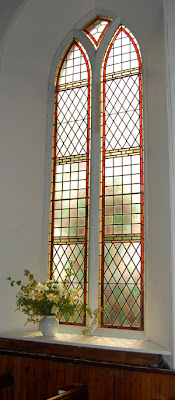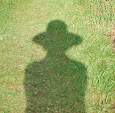
Broom in the Trossachs countryside
ColourLover states here "In English, yellow has been associated cowardice or the physical illness of Jaundice, but in Hindu Mythology, yellow has the power to bestow intellect and change minds. In South Korea, yellow is associated with jealousy, opposed to our association with green. In China, yellow is associated with royalty and until modern times, common people were not allowed to don the colour. In Arab culture, a 'yellow smile' is a smile that is disingenuous, and in France, 'yellow laughter' is laughter that results in something not being found amusing or laughing off a joke made about you.

Golden varigated Hosta, Peebleshire
Yellow is also used in traffic signage to slow drivers, but it can also be used to signify a quarantined area. In money, it symbolises gold and coins. In Italian Literature, 'yellow books' are mysteries."

Dunira, Perthshire, early morning sunshine


















